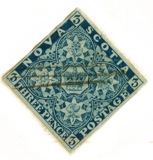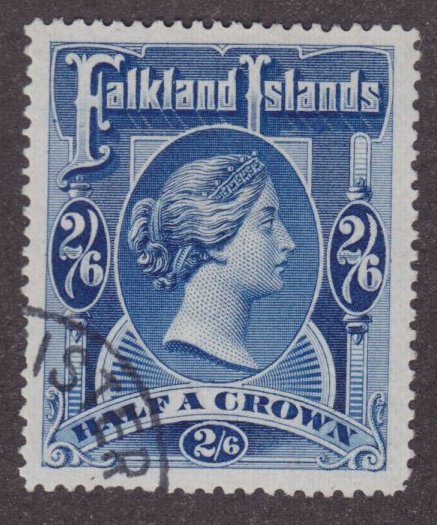
Discussion - Member to Member Sales - Research Center

Discussion - Member to Member Sales - Research Center


As you can see, a major from Marine Helicopter Transport Squadron 161 posted it. That is so cool! Why? Because it represents a significant shift in the care of wounded soldiers.
A very few primitive helicopters were used to evacuate wounded soldiers during the Second World War. They couldn’t fly fast enough, far enough, high enough, or carry a heavy-enough load to be very useful. By the Korean War, however, they were coming of age. Every episode of the TV series MASH, featuring the medical and support staff of a field hospital in Korea, opened with the arrival of a helicopter carrying a wounded soldier.
Since MASH units were U.S. Army facilities, MASH the television series concentrated on field hospitals, but another type of hospital — the hospital ship — was used by the Navy to treat wounded U.S. Marines*. However, the hospital ships had been commissioned during the Second World War, before helicopters were in common use. As a result, there was no way for helicopters to transport wounded Marines directly to the ships. Instead, wounded Marines were taken by boat out to a hospital ship, transferred to a barge tied up to the hospital ship, and then lifted aboard the hospital ship by a crane. It was marginally better if a helicopter could take a wounded Marine directly to the barge, from which he would be lifted aboard by a crane.
This photograph shows the hospital ship U.S. Haven at anchor in South Korean waters with large barges tied up alongside, each featuring a helicopter landing pad:

The hospital ships of that time were better than many civilian hospitals in terms of professional staffing and the availability of up-to-date operating theatres, antibiotics, nursing care, and prescription medications. Nevertheless, while the barge-to-ship transfer was brief, it was long enough to be fatal for critically wounded soldiers, assuming that it extended beyond the “Golden Hour,” that brief period following traumatic injury during which prompt medical treatment may prevent death.
Dr. Joel Boone, a navy medical officer, knew that lives could be saved if wounded soldiers could skip the barge-to-hospital-ship transfers and be flown directly to the ships. In 1951 he suggested building helicopter landing platforms — helipads — on the sterns of hospital ships to facilitate transfer of patients. His ship, U.S.S. Consolation, (another Haven-class ship) returned to the States to have a landing platform built on her stern. On Dec. 18, 1951, the refitted Consolation, having returned to South Korea, landed a Sikorsky H-5 Dragonfly helicopter carrying a wounded Marine on its new landing platform. That leap forward in military medicine would save the lives of thousands of soldiers. Here’s a postcard showing Consolation ready to take on board its first Marine to arrive directly by helicopter:

The cover that’s behind this posting was mailed just 24 days before Consolation made history with that helicopter landing. The dealer from whom I bought the cover had scanned only the front, which was enough for me to loosen my purse strings. (Actually, I don’t have a purse. I have a PayPal account). So I was doubly pleased to see that the cover came with a bonus on the back, the logo of the helicopter squadron, HMR 161:

I was also pleased to learn that the squadron is still around, although it’s now called Marine Medium Helicopter Squadron 161. Here’s their current logo:

The slogan, Equitatus Caeli, variously translates to The Horses of Heaven or The Cavalry of the Air.
Here’s the cover, front and back (admittedly, as covers go, it's not very exciting):

It’s surprising how important helicopters have been in my life. I don’t actually enjoy flying in them. I can’t explain why, but put me in a small airplane and I’ll smile. Put me in a helicopter and I’ll ask, “Where are the wings?” Nevertheless, I can’t not appreciate helicopters, because on two occasions, once after a plane crash and once after I was wounded in Vietnam, helicopters transported me to hospital and may well have saved my life. In Vietnam, the chopper that evacuated me from a battlefield took me first to a field hospital and then to U.S.S. Repose, another Haven-class hospital ship.
One of the most beautiful sights I have ever seen, from a stretcher on board a U.S. Marine Corps Seahorse helicopter, was the U.S.S. Repose hospital ship, sailing the blue waters of the China Sea beneath a blue sky. Here’s a postcard picturing Repose:

Bob
*Huh?! U.S. Navy hospital ships treating Marines? That's right. No red-blooded, God-fearing Marine would ever admit it, but the U.S. Marine Corps is the amphibious landing force of the U.S. Navy, and medical services to the Marines are provided by Navy corpsmen (that's what I was), Navy nurses, and Navy doctors.

7 Members
like this post.
Login to Like.
Bob, when you mentioned MedEvac in Korea, the (Michener) book and movie Bridges at Toko-Ri came instantly to mind...
Great posting, THANKS!
-Paul

1 Member
likes this post.
Login to Like.

It’s always a thrill for me when a philatelic purchase falls seamlessly into place alongside other postal artifacts in my collection. Such was the case on Friday when my mailbox was occupied by three covers posted by American soldiers from South Korea during the Korean War. One in particular was particularly welcome. Here’s the return address (I added the blue line):

As you can see, a major from Marine Helicopter Transport Squadron 161 posted it. That is so cool! Why? Because it represents a significant shift in the care of wounded soldiers.
A very few primitive helicopters were used to evacuate wounded soldiers during the Second World War. They couldn’t fly fast enough, far enough, high enough, or carry a heavy-enough load to be very useful. By the Korean War, however, they were coming of age. Every episode of the TV series MASH, featuring the medical and support staff of a field hospital in Korea, opened with the arrival of a helicopter carrying a wounded soldier.
Since MASH units were U.S. Army facilities, MASH the television series concentrated on field hospitals, but another type of hospital — the hospital ship — was used by the Navy to treat wounded U.S. Marines*. However, the hospital ships had been commissioned during the Second World War, before helicopters were in common use. As a result, there was no way for helicopters to transport wounded Marines directly to the ships. Instead, wounded Marines were taken by boat out to a hospital ship, transferred to a barge tied up to the hospital ship, and then lifted aboard the hospital ship by a crane. It was marginally better if a helicopter could take a wounded Marine directly to the barge, from which he would be lifted aboard by a crane.
This photograph shows the hospital ship U.S. Haven at anchor in South Korean waters with large barges tied up alongside, each featuring a helicopter landing pad:

The hospital ships of that time were better than many civilian hospitals in terms of professional staffing and the availability of up-to-date operating theatres, antibiotics, nursing care, and prescription medications. Nevertheless, while the barge-to-ship transfer was brief, it was long enough to be fatal for critically wounded soldiers, assuming that it extended beyond the “Golden Hour,” that brief period following traumatic injury during which prompt medical treatment may prevent death.
Dr. Joel Boone, a navy medical officer, knew that lives could be saved if wounded soldiers could skip the barge-to-hospital-ship transfers and be flown directly to the ships. In 1951 he suggested building helicopter landing platforms — helipads — on the sterns of hospital ships to facilitate transfer of patients. His ship, U.S.S. Consolation, (another Haven-class ship) returned to the States to have a landing platform built on her stern. On Dec. 18, 1951, the refitted Consolation, having returned to South Korea, landed a Sikorsky H-5 Dragonfly helicopter carrying a wounded Marine on its new landing platform. That leap forward in military medicine would save the lives of thousands of soldiers. Here’s a postcard showing Consolation ready to take on board its first Marine to arrive directly by helicopter:

The cover that’s behind this posting was mailed just 24 days before Consolation made history with that helicopter landing. The dealer from whom I bought the cover had scanned only the front, which was enough for me to loosen my purse strings. (Actually, I don’t have a purse. I have a PayPal account). So I was doubly pleased to see that the cover came with a bonus on the back, the logo of the helicopter squadron, HMR 161:

I was also pleased to learn that the squadron is still around, although it’s now called Marine Medium Helicopter Squadron 161. Here’s their current logo:

The slogan, Equitatus Caeli, variously translates to The Horses of Heaven or The Cavalry of the Air.
Here’s the cover, front and back (admittedly, as covers go, it's not very exciting):

It’s surprising how important helicopters have been in my life. I don’t actually enjoy flying in them. I can’t explain why, but put me in a small airplane and I’ll smile. Put me in a helicopter and I’ll ask, “Where are the wings?” Nevertheless, I can’t not appreciate helicopters, because on two occasions, once after a plane crash and once after I was wounded in Vietnam, helicopters transported me to hospital and may well have saved my life. In Vietnam, the chopper that evacuated me from a battlefield took me first to a field hospital and then to U.S.S. Repose, another Haven-class hospital ship.
One of the most beautiful sights I have ever seen, from a stretcher on board a U.S. Marine Corps Seahorse helicopter, was the U.S.S. Repose hospital ship, sailing the blue waters of the China Sea beneath a blue sky. Here’s a postcard picturing Repose:

Bob
*Huh?! U.S. Navy hospital ships treating Marines? That's right. No red-blooded, God-fearing Marine would ever admit it, but the U.S. Marine Corps is the amphibious landing force of the U.S. Navy, and medical services to the Marines are provided by Navy corpsmen (that's what I was), Navy nurses, and Navy doctors.

7 Members
like this post.
Login to Like.
10:46:06am
re: Postal history, helicopters, and me
Bob, when you mentioned MedEvac in Korea, the (Michener) book and movie Bridges at Toko-Ri came instantly to mind...
Great posting, THANKS!
-Paul

1 Member
likes this post.
Login to Like.

